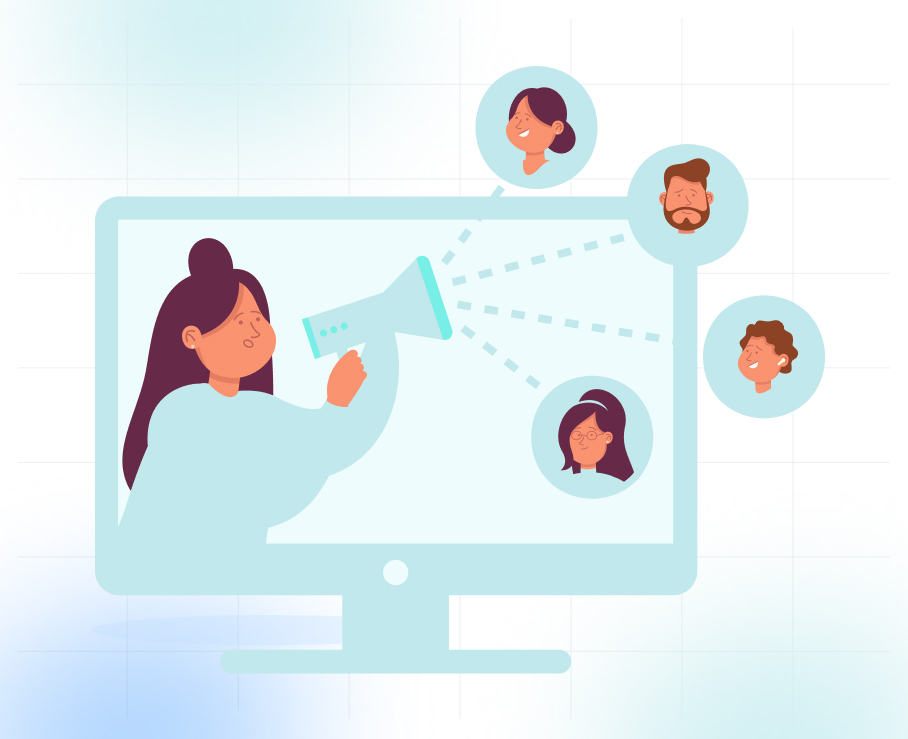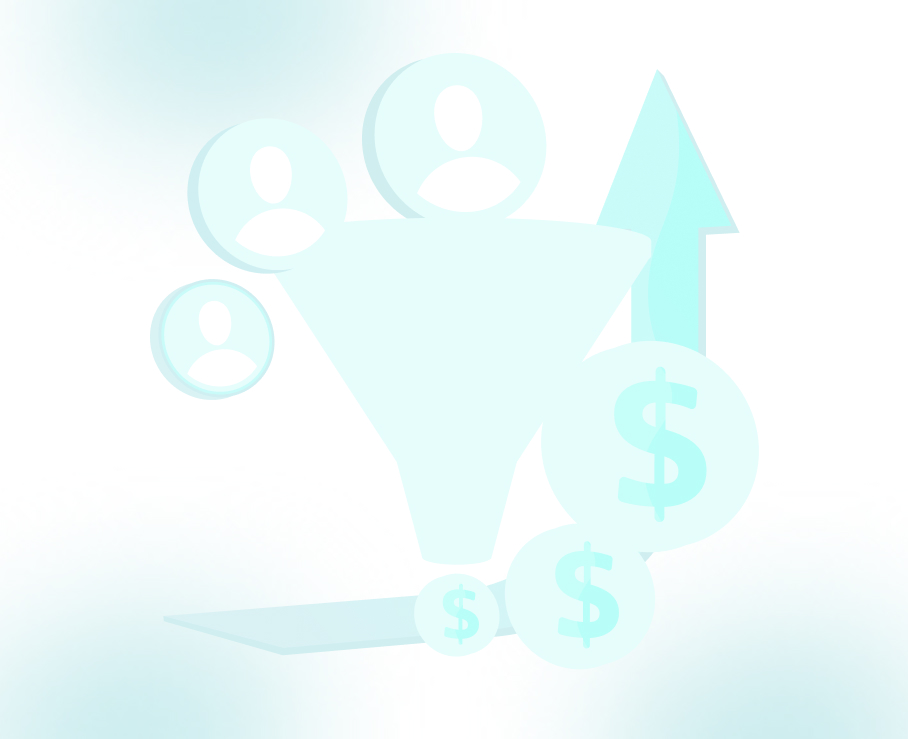
Best Practices for B2B Prospection Emails with Examples
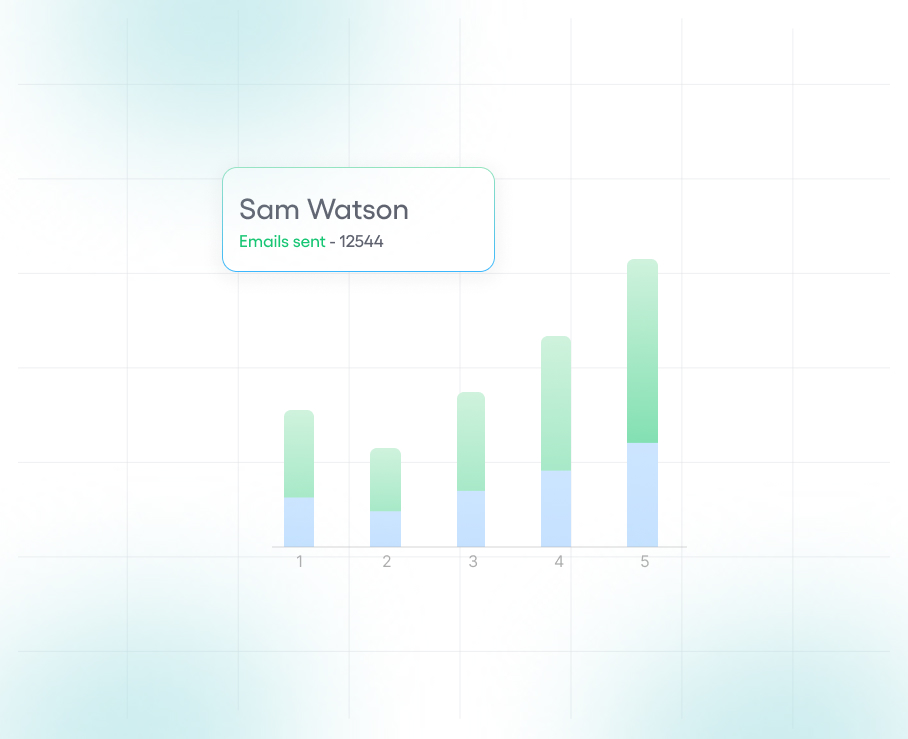
B2B mail prospection has evolved from basic cold emails to data-driven, personalized outreach that directly impacts your sales pipeline. In fact, 42% of B2B marketers rank email as a top revenue-driving channel, second only to in-person events.
But with inboxes overflowing and attention spans shrinking, getting responses from decision-makers requires more than just hitting send. It takes segmentation, compliance, and a strong value proposition.
Crafting effective B2B prospecting emails should not be limited to reaching out. It includes making meaningful connections that drive business outcomes.
Let’s break down the top B2B prospecting practices that help emails get opened and get replies.
TL;DR
- Segmentation and personalization drive higher open and reply rates
- Subject lines need clarity, value, and brevity to stand out
- Quick, conversational email bodies with clear CTAs get real responses
- Email deliverability depends on authentication, compliance, and list hygiene
- Follow-ups timed at 3–7 days can dramatically improve engagement

1. Understand Your Target Audience
Successful mail prospection in B2B starts with a deep understanding of your audience. A generic message won’t resonate, especially with busy decision-makers in sectors like IT, staffing, and manufacturing. Segmentation and personalization are key.
Segment by Industry, Role, and Goals
Tailor your emails to each prospect group's unique challenges:
- MSPs: Prioritize operational efficiency, reduced downtime, and scalable solutions.
- Staffing Firms: Focus on fast talent sourcing, candidate quality, and cost-per-hire.
- Tech Firms: Emphasize sales-qualified leads (SQLs), product-market fit, and MRR growth.
Why Segmentation Works:
- 82% higher open rates for personalized emails
- 41% higher CTRs than non-personalized emails
- 58% of all email revenue comes from segmented campaigns
- 6× higher conversion rates from personalized outreach
Example Email for MSP:
Subject: Streamlining Lead Gen for [Prospect's Company]
Hi [First Name],
I came across [Company] while researching MSPs focused on growth in [Industry/Location]. We recently helped [Similar Company] increase SQLs by 38% through personalized outreach strategies tailored to your service model.
Would you be open to a quick call this week to see how we can support your lead funnel goals in Q3?
This approach speaks directly to their challenges and offers a personalized solution. It shows that you understand their business and how your service fits into their specific context, making the email feel more engaging and less generic.
Also Read: Why Email Marketing Is a More Effective Strategy Than Cold Calling
2. Craft Compelling Subject Lines
In B2B mail prospection, your subject line determines whether your message is opened or ignored. With inboxes flooded daily, clarity and value must come through in just a few words.
According to statistics, emails with personalized subject lines are 26% more likely to be opened.
Best Practices for B2B Subject Lines:
- Keep It Under 50 Characters: Ensure readability across mobile and desktop.
- Highlight Value or Outcome: Focus on what the prospect will gain.
Subject Line Pitfalls to Avoid:
- Vague statements like “Let’s connect” or “Quick question”
- Overuse of caps or exclamation marks
- Clickbait that doesn’t match the email content
Well-crafted subject lines are the first filter in successful B2B email prospecting. Make yours count.
3. Write an Engaging and Clear Email Body
The body of your email is where you fulfill the promise made in your subject line. It's essential to keep it concise, clear, and direct while maintaining a conversational tone that fosters engagement.
Structuring Your Email Effectively
A well-structured email guides the reader seamlessly through your message. Here's a breakdown:
- Introduction: Briefly introduce yourself and state the purpose of your outreach.
- Value Proposition: Highlight how your solution addresses a specific problem or need of the recipient.
- Call to Action (CTA): Conclude with a clear, actionable step you want the recipient to take.
Example:
Subject: Boosting [Prospect’s Company]’s Lead Generation Efficiency
Hi [Prospect's Name],
At TLM, we specialize in driving high-quality leads for companies in [industry]. Our SQL generation service has helped [similar company] achieve a 40% increase in sales-qualified leads in just 6 months.
If you're open to learning more, I'd love to schedule a quick meeting. Would [insert date/time] work for you?
Why This Approach Works
- Relevance: Tailoring the message to the recipient's industry and challenges increases engagement.
- Credibility: Citing specific results from similar companies builds trust.
- Clarity: A straightforward CTA makes it easy for the recipient to respond.
4. Implement Effective Calls to Action (CTAs)
A well-crafted Call to Action (CTA) is pivotal in guiding recipients toward the desired next step. Emails with a single, clear CTA can get more clicks compared to emails with multiple CTAs.
Best Practices
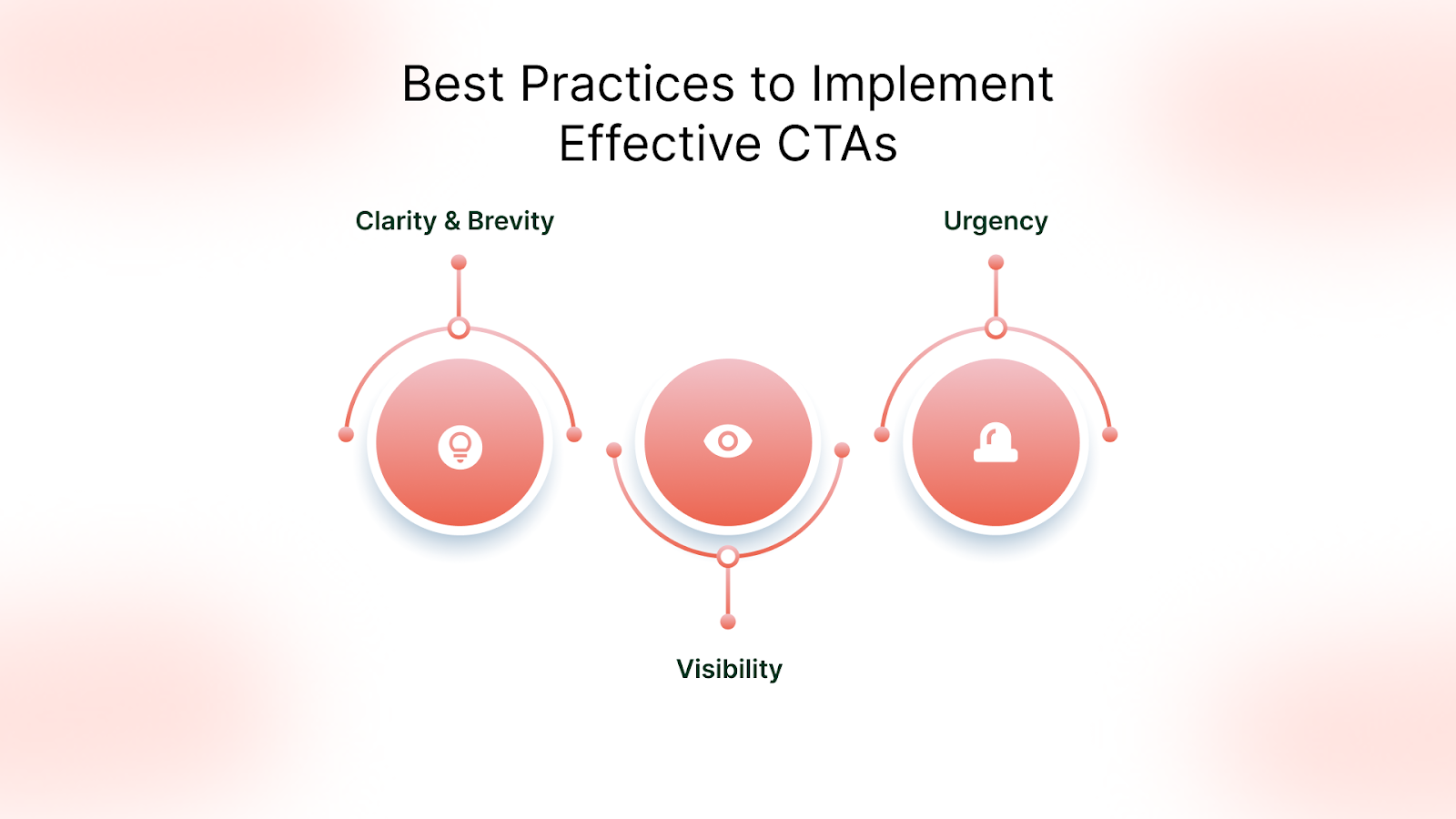
- Clarity and Brevity: Use direct language like "Schedule a meeting" or "Start Your Free Trial."
- Visibility: Position the CTA prominently within the email.
- Urgency: Incorporate time-sensitive language to encourage prompt action.
Example
"Unlock your team's potential, schedule a 15-minute meeting today."
Placing the CTA button at the end of the product page can increase conversions by 70%.
5. Personalize Your Outreach
Tailoring emails based on the recipient's company, role, or recent activities can significantly enhance engagement. Understanding the prospect's needs and challenges allows for more relevant messaging.
Incorporating the recipient's name and referencing specific details fosters a sense of connection.
Example:
Subject: [Recipient's Name], let's enhance [Specific Goal] at [Company Name]
Hi [Recipient's Name],
I noticed that [Company Name] recently [specific event or achievement]. Given your role in [Department], I believe our solution can assist in [specific benefit].
Would you be open to a brief call next week to discuss this further?
Best regards,
[Your Name]
Also Read: 5 Email Types That Should Never Be Automated and Require a Personal Touch
6. Optimize for Deliverability
Implementing email authentication protocols like SPF, DKIM, and DMARC is crucial. These protocols help verify the sender's identity, reducing the chances of emails being marked as spam.
Adhering to regulations such as GDPR and CAN-SPAM is essential. Non-compliance can result in significant penalties, with fines up to $53,088 per email under the CAN-SPAM Act and up to 4% of global revenue under GDPR.
Best Practices

- Maintain a Clean Email List: Regularly update and cleanse your email list to remove inactive or invalid addresses.
- Use Reputable Email Service Providers: Choosing established providers can enhance deliverability rates.
- Monitor Spam Complaint Rates: Aim to keep spam complaint rates below 0.1%. Exceeding this threshold can jeopardize your sender reputation.
7. Follow-Up Strategically
Initiate your first follow-up email within 2–5 business days after the initial contact. This window allows recipients sufficient time to process your initial message without feeling overwhelmed.
Maintain a balance between persistence and respect. If your first follow-up does not receive a response, consider sending a second one 5–7 days later.
Example Follow-Up Email:
Subject: Just checking in, [Recipient's Name]
Hi [Recipient's Name],
I wanted to follow up on my previous email regarding [specific topic or proposal]. I understand you're busy, but I believe [brief value proposition] could benefit [Company Name].
If you have any questions or would like to discuss further, feel free to reach out.
Best regards,
[Your Name]
8. Analyze and Iterate
Metrics: Regularly monitor key email performance indicators to assess and enhance your campaigns:
- Open Rate: This indicates the percentage of recipients who opened your email. A good benchmark is around 20–30%, but this varies by industry.
- Click-Through Rate (CTR): Measures the percentage of recipients who clicked on links within your email. The average CTR across all industries is approximately 2.00%.
- Response Rate: Reflects the percentage of recipients who replied to your email, providing direct engagement insights.
Testing: Implement A/B testing to optimize various elements of your emails:
- Subject Lines: Experiment with different lengths, tones, and personalization. Subject lines around seven words long can achieve open rates of nearly 30%.
- Email Content: Test variations in messaging, formatting, and personalization to determine what resonates best with your audience.
- Calls to Action (CTAs): Assess different CTA placements, wording, and designs to identify which combinations drive higher conversions.
Why TLM Is the Right Choice for Mail Prospection in B2B?
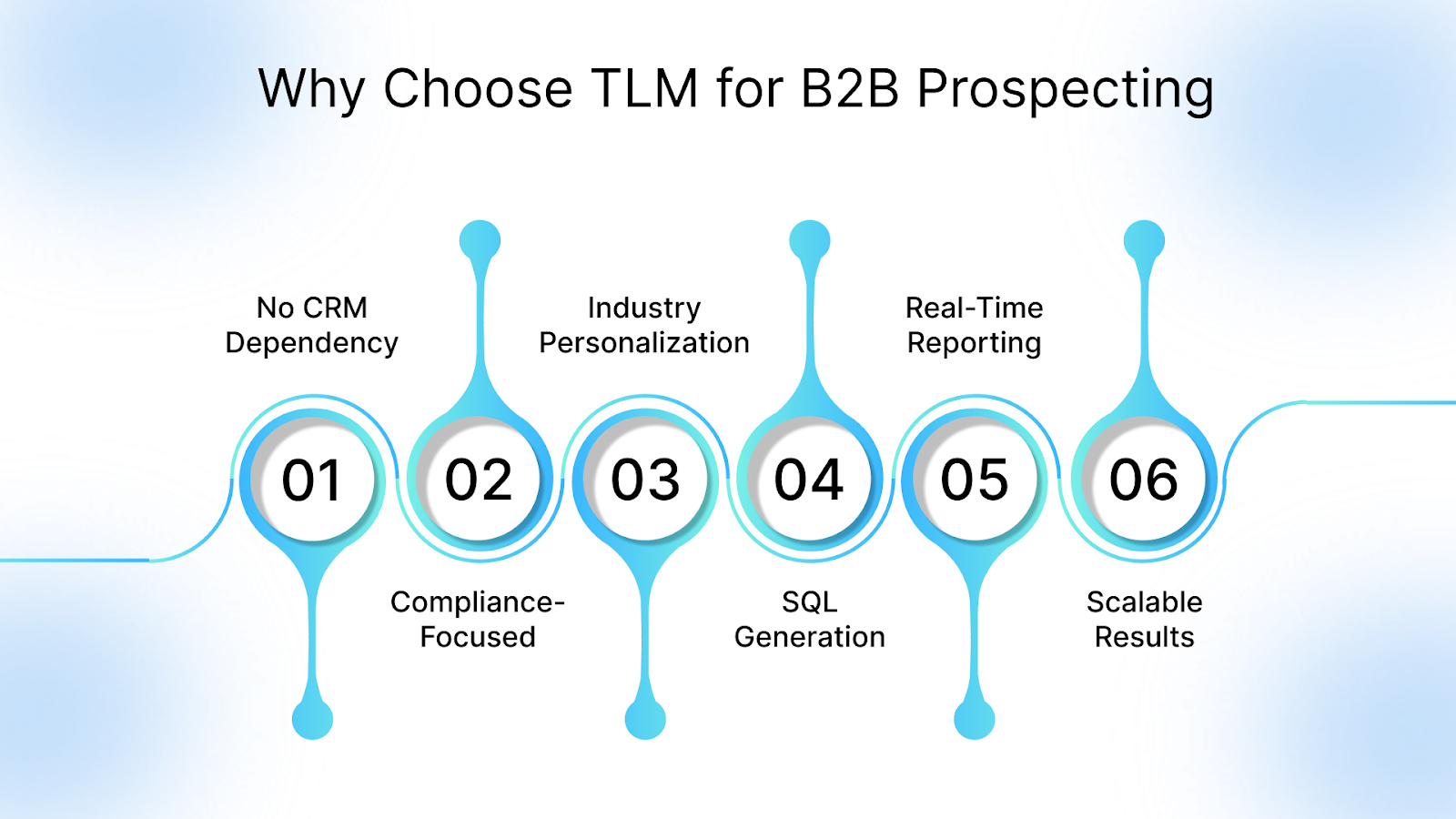
B2B prospection emails aren't just about outreach, they're about outcomes. At The Lead Market (TLM), we build campaigns that consistently generate sales-qualified leads (SQLs), schedule decision-maker appointments, and contribute directly to monthly recurring revenue (MRR).
Here’s what makes our approach different:
- No CRM Dependency: Our proprietary platform runs full-scale campaigns without relying on external tools or manual data entry.
- Compliance-Centric Campaigns: Every outreach is CAN-SPAM compliant, ethically sound, and optimized for deliverability, with no cold calling or unsolicited LinkedIn messages.
- Industry-Specific Personalization: From MSPs to staffing firms and manufacturers, our copy, targeting, and segmentation reflect your ICP’s real pain points.
- SQL Generation, Not Just Leads: We qualify every response, convert interest into appointments, and focus only on high-value opportunities ready to engage.
- Real-Time Reporting: Get full visibility into emails sent, reply rates, scheduled meetings, and lead velocity. No ambiguity, just metrics that drive boardroom decisions.
- Scalable Results That Drive MRR: Whether you’re launching in a new market or scaling outreach across geographies, our team keeps your pipeline conversion-ready.
Summing Up
Imagine the results of a tailored, data-driven email strategy, one that consistently attracts and converts high-quality leads.
By implementing best practices like crafting clear CTAs, personalizing your outreach, and analyzing performance metrics, you'll create more impactful email campaigns that resonate with your target audience.
Partnering with TLM can help you achieve all that. We specialize in helping businesses like yours fine-tune their email marketing and lead generation strategies for maximum impact.
FAQs
1. How can I improve my email subject lines?
Keep it short, clear, and relevant. Aim to spark curiosity without being too aggressive. Test different subject lines to determine which one resonates best.
2. Why is personalization important?
Personalized emails build a connection and increase engagement. Tailor your message to the recipient's role, company, or needs for better results.
3. What is the best time to send B2B emails?
Send emails during business hours, ideally mid-morning or early afternoon. Timing your emails when recipients are at work improves visibility.
4. How often should I follow up?
Follow up 3–5 days after the initial email. If needed, send a second follow-up after 5–7 days. Limit follow-ups to two or three to avoid being pushy.
Q. What metrics should I track?
Monitor open rates, click-through rates, and response rates to assess the effectiveness of your emails and make improvements.


